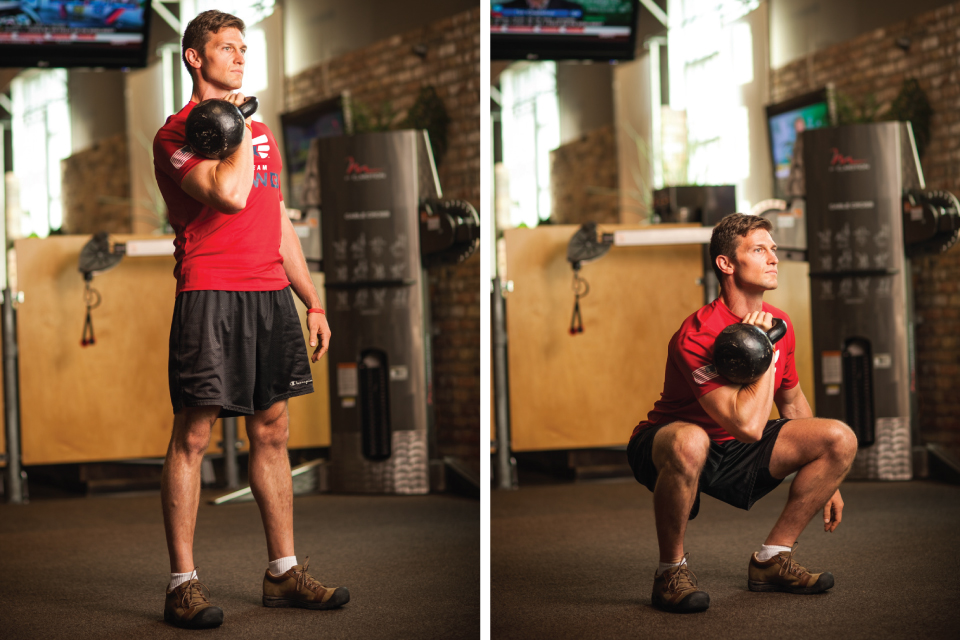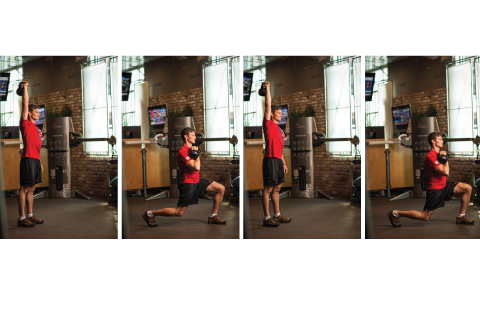Strength and ‘Core’ Equals More Than You Think

Why the quotes around the word “core”? I think most anyone can recognize the trends, flash, and hype that help sell certain ideas and training tools in the fitness industry. Well, the word “core” has become a word with many definitions and meanings. I like to keep things simple so my definition of the core is based on anatomical function and its purpose in the whole of the human movement system. Although there are many functions of the core area (hips and torso), its key role in movement is first to protect the spine and second to effectively transmit force to perform the upper and lower limb movements. That doesn’t sound very exciting but let’s put it another way: Focusing on enhancing core function and strength will allow you to move better, increase the amount of work you can accomplish, and reduce the risk of injury tremendously. This translates to more efficient weight-loss activities, being pain free during your sports training (running, tennis, fitness competitions, triathlons), and faster recovery from training.
This is why we are going to share a strategy for incorporating movements that will emphasize the core and its role in functional movement. It’s called asymmetrical, or one-sided, loading in which the body takes on either a one-sided stance, one-sided resistance load, or both in order to increase the demands of the core and its role in connecting the body in all three planes of motion and stabilizing uneven loads. When, in life or sport, are you perfectly loaded on both sides symmetrically in a perfect two-foot stance? Another great caveat to this is that we are emphasizing “core” stability and strength within a total body movement that transfers to its real function in many activities. This type of training should be implemented (and is most effective) after establishing a foundational strength base through your current strength training. Following that phase of training, you can integrate the asymmetrical training movements to enhance your strength training and provide some great challenges in your circuit training.
The following exercises each emphasize either lower body movement or upper body movement. Keep in mind that these movements are never isolated and incorporate total body work while then especially challenging “core” stability, movement sequencing, and strength. You can incorporate these movements individually as well as use the ones shown to create a great total body circuit with “core” emphasis.
1. One-Arm KB Front Squat
Focus: One-sided upper body load during lower body movement challenges “core” to maintain vertical position.

- Start in a shoulder-width stance with the kettlebell carried in one hand at shoulder level close to the body.
- Brace the core; do not let the one-side load pull you laterally or change your position.
- Sit back into a squat while maintaining vertical alignment of the torso. Make sure the hips or shoulders continue to face forward during movement and do not rotate.
- Press through the heels and return to standing position.
2. One-Leg/One-Arm Cable Row
Focus: Movement that emphasizes the cross-pattern connection through the core from one side of the upper body and the opposite side of lower body.
- Start in a single-leg stance with slight bend in the ankle, knee and hip (athletic stance) while holding a band or cable resistance in the opposite hand with arm extended.
- Perform a row by pulling the elbow back past the midline of the body as well as pulling shoulder back naturally to allow a full range of motion for the row.
- Maintain balance and vertical alignment of the ankle, knee, and hip at all times.
- Keep the chest facing forward; do not allow torso to rotate with the movement. This emphasizes “core” control and stability. Other variations can emphasize torso rotation in a more advanced progression.
- Return arm to a fully extended position to finish the movement.
3. One-Arm Lunge to Press
Focus: An asymmetrical lower body movement (lunge or split squat) loads one-side of the upper body.
-
Start in a tall, standing posture with feet hip-width apart and kettlebell or dumbbell in one hand at shoulder carry position.

- Step out into the lunge position while maintaining upright torso position (avoid letting the load pull you laterally or rotate torso).
- Push off the front heel, to return from the lunge and allow the upward momentum of the lower body to assist you in performing a press overhead with arm fully extended.
- Repeat the lunging movement while performing the shoulder press simultaneously.
4. One-Arm Push-Off Medicine Ball
Focus: An elevated surface challenges the single-arm load and movement of the upper body in a body weight movement.
- Start in a push-up or prone plank position on the ground, one hand on an elevated surface such as step, medicine ball, or yoga block with the same arm/shoulder flexed.
- Make sure you start with shoulders and hips parallel to ground and brace the core with back in neutral/“flat” position.
- Push through the hand that is on the elevated surface, extending that arm while keeping hips and shoulders parallel to the floor and back flat.
- The opposite hand will come off the floor, creating a single-armed stance.
- Slowly descend under control by flexing the single-side loaded arm until free hand is back in solid contact with the ground.
As you can guess, any functional movement, daily living task, or sports movement involves the “core” and its ability to protect the spine and transfer forces across the body. With many of us forced to live a sedentary lifestyle, we can benefit our long-term plan of activity—and reduce risk of injury—by incorporating more movements that demand increased “core” strength and stability during our training regime. Final tip: Find a certified fitness professional to assist you in building a great base of strength for these challenging movements. If you already have a good strength foundation, go for it and I’ll see you in January to kick off the new year Austin Fit Magazine style!






